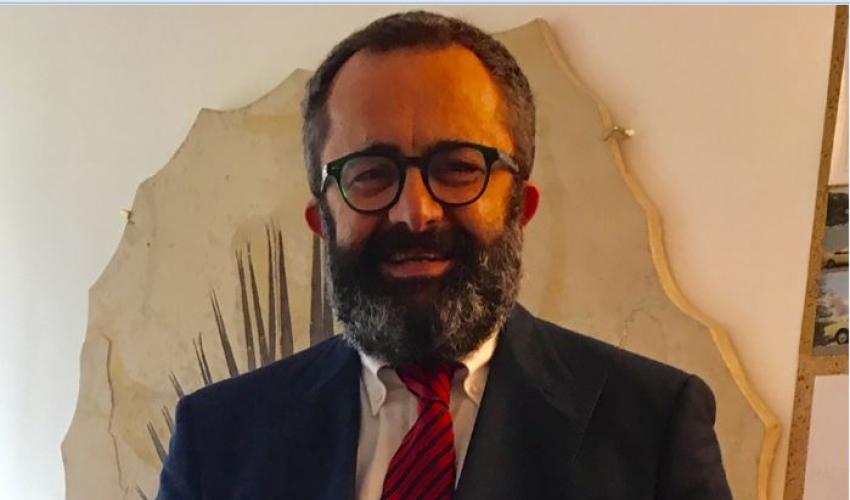
Reinventing the Motor Show
RINO DROGO, BOCCONI ALUMNUS AT THE HELM OF THE TRADE EVENT IN BOLOGNA DEVOTED TO CARS AND MOTORBIKES, REVEALS HIS INGREDIENTS FOR THE FAIR'S NEWFOUND SUCCESSby Emanuele Elli
Translated by Alex Foti
Emilia, a region in northern Italy, is a land where the motor industry has a long tradition (think of Ducati, Ferrari, Lamborghini), so that a trade event devoted to cars and motorbikes seemed like a natural winner. Yet the recent history of the Bologna Motor Show tells a different story, replete with canceled or unsuccessful editions, so much that the very survival of the show had seemed uncertain at one point. This changed in 2016, when BolognaFiere, which owns the MotorShow brand, entrusted the motoring event and its emotional legacy to Rino Drogo, Bocconi alumnus, an experienced manager in the automotive sector for having filled many managerial positions inside the FCA Group. The relaunch edition of 2016 was a success, and the 2017 edition, which closed on December 10, also seems to have gone very well.
➜ How did you manage to resurrect an event that seemed to have run its course?
In reality, despite the dark moments, the brand continued to be strong. When they asked me: "Why are you trying again”, I answered: "Because people want it", and it was true. So much so that last year we had 220,000 visitors. However, I must say that, in the role of event organizer, simple attendance figures leave me cold. I'm more interested in knowing if people had fun, whether they enjoyed the fair’s attractions, how much time they spent there. The fact that last year the average visit duration was 6.5 hours out of 9 hours of opening is what gave me the biggest satisfaction and made me understand that I was on the right track to revive the event.
➜ Once the public was won over, you still had to persuade auto makers to participate. Many car manufacturers are now deserting even the largest trade shows. How did you deal with the problem?
Car companies are disoriented, traditional motor shows no longer work, and they are increasingly expensive. In every company there has been a major rethink about attending fair events. With the MotorShow we offer them a less static model: more entertainment, more rides, more attractions, more sports. Today enthusiasts already know the car models before they see them for real, they have already looked at them on websites, have configured and spied them.. We rather aim to make them try models out. Last year at the Motor Show, motor companies offered visitors a total of 44,000 test drives. Many have been on board this year, too, so much so that the 2017 edition has seen the return of Ferrari, with a full day dedicated to their sports cars, the Porsche races, a day for Lamborghinis, the Harley Davidson rally of bikers etc.
âžœ In recent years, the car exhibit at Turin’s Valentino Park has been increasingly popular. Is there a common thread linking the two events, outlining a winning business model in the field of motor shows?
The business models of the two events seem very different to me. In Turin, they are betting everything on a free, open-air event, in a public space where people are already present, such as the Valentino Park, and offer all motor houses equal terms of access. Conversely, we are betting on the entertainment side of the motor show, and offer individual car manufacturers an audience of devoted fans. There is not much affinity, and therefore not much competition, either. Actually, I rather like the event in Turin; I think that all events and fairs that keep the passion of motorists alive are to be supported and promoted.
âžœ As MotorShow, this year you have expanded the concept and program of off-fair events, i.e. the so-called “Fuori Salone”. How important is it for a trade fair to try to involve the surrounding area?
For us it was absolutely fundamental, being BolognaFiere a company where the Municipality of Bologna and the Emilia Region hold major stakes. There are several initiatives in the city, where four motor brands exhibit their models in as many public squares, and we also have related events at the Imola racing circuit.
➜ Is it also a way to reach a wider audience?
Yes, we have to do it with moderation, because otherwise the fair loses attractiveness in the eyes of its most loyal audience: motor enthusiasts. You also have to strike the right balance when selecting exhibitors. For example, in 2017 we have received more than 200 requests for stalls from clothing merchants and even more than that from food vendors. However we only admitted those we considered appropriate for the fair’s theme, and in a sufficient number to feed visitors and quench their thirst. If we had just cared about maximizing revenue, we would have let in betting companies, online poker machines, video lotteries.. However organizing a successful trade event is like following a good recipe: you have to know how to dose the various ingredients.
Rino Drogo
Milanese and 57 years old, he is General Manager of Bologna’s MotorShow. Prior to being appointed to this position, he did all his career in the automotive sector, working in strategic communication first for a consultancy working for Alfa Romeo, then moving to Toyota, Ford, Rover, and finally to Fiat (now FCA Group) where he remained almost twenty years, working as event manager and head of communications with customers for the brands owned by the automobile group founded in Turin. He entered Bocconi as a student in 1979 and graduated (“it took me quite a bit, because I was also working in the family company”) with a dissertation on the auto industry supervised by Professors Enrico Valdani and Nando Dalla Chiesa.
